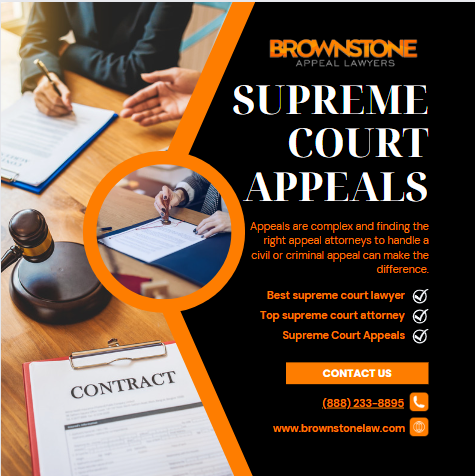In the labyrinth of the legal system, Supreme Court appeals stand as the final frontier for those seeking justice and resolution. A Supreme Court appeal marks the culmination of a legal journey, where the highest court in the land becomes the arbiter of complex legal issues, ensuring the fair application of the law. In this exploration, we delve into the intricacies of Supreme Court appeals, examining their significance, the process involved, and the impact they have on shaping legal precedents.
The Significance of Supreme Court Appeals: The Apex of Judicial Review
At the heart of the legal system, Supreme Court appeals hold a position of unparalleled significance. The decision to appeal to the Supreme Court is not taken lightly; it represents the belief that a case involves fundamental legal principles or constitutional issues that merit the attention of the highest judicial authority. The Supreme Court serves as the apex of judicial review, ensuring that the rule of law is applied consistently and justly across the nation.
The Journey to the Apex: Understanding the Appellate Process
A Supreme Court appeal is the final chapter in a legal saga that typically begins in lower courts. The journey to the apex involves a step-by-step progression through the appellate system, starting from trial courts, then moving to intermediate appellate courts, and finally reaching the state or federal Supreme Court.
Once the Supreme Court grants certiorari, the parties submit legal briefs outlining their arguments, and sometimes, oral arguments are heard. The justices then deliberate, and a majority decision is reached. The final verdict not only resolves the specific case but also establishes legal principles that can influence future cases and shape the course of jurisprudence.
Landmark Decisions: Shaping Legal Precedents
Supreme Court appeals are instrumental in shaping legal precedents that guide the interpretation and application of the law. Landmark decisions handed down by the Supreme Court have far-reaching consequences, influencing not only the parties involved but also the entire legal landscape. These decisions become pillars of legal reasoning, cited in subsequent cases to support or challenge legal arguments.
Constitutional Questions: Safeguarding Fundamental Rights
For instance, cases involving the First Amendment’s protection of free speech, the Fourth Amendment’s prohibition against unreasonable searches and seizures, or the Fourteenth Amendment’s guarantee of equal protection under the law frequently find their way to the Supreme Court. The Court’s rulings on these constitutional questions not only resolve the immediate disputes but also establish guidelines for the protection and limitation of individual rights.
The Dynamics of Oral Arguments: Advocacy at the Apex
The dynamics of oral arguments are unique, as attorneys navigate the challenging task of presenting their case succinctly while addressing the justices’ concerns. Justices often pose probing questions, challenging the legal reasoning and factual foundations of the arguments presented. The ability of attorneys to effectively communicate their positions during oral arguments can significantly influence the justices’ perspectives and, ultimately, the outcome of the case.
The Role of Precedent: Stare Decisis in Supreme Court Appeals
Precedent, or stare decisis, plays a crucial role in Supreme Court appeals. Stare decisis, Latin for “to stand by things decided,” is the principle that the Court should generally adhere to its previous decisions and follow established legal precedent. This doctrine provides stability and predictability to the legal system but is not without controversy, as justices grapple with the balance between respecting precedent and reassessing legal doctrines in light of evolving societal norms and legal interpretations.
Access to Justice: A Two-Edged Sword
While Supreme Court appeals offer a crucial avenue for justice, they also present a two-edged sword concerning access to justice. On one hand, the Supreme Court’s role as the ultimate arbiter ensures a consistent interpretation and application of the law nationwide. On the other hand, the limited number of cases the Court can review means that many litigants may never have their appeals heard, leaving potentially critical legal issues unaddressed.
Evolution of Legal Thought: Dissents and Concurrences
Supreme Court appeals often feature not only the majority opinion but also dissents and concurrences, providing a window into the dynamic process of legal reasoning and interpretation. Dissenting opinions, written by justices who disagree with the majority, serve as powerful statements challenging prevailing legal interpretations. These dissents can influence future legal discourse and, in some cases, become the foundation for overturning precedent.
The International Impact: Global Implications of Supreme Court Appeals
The influence of Supreme Court appeals extends beyond U.S. borders, with decisions often having global implications. Legal scholars, policymakers, and courts worldwide may look to U.S. Supreme Court decisions as persuasive authority in shaping their own legal frameworks. Notable cases, especially those involving human rights, international law, or global issues, become reference points in the broader international legal landscape.
The Evolving Landscape: Technology and Supreme Court Appeals
As society evolves, so too do the legal issues that find their way to the Supreme Court. In recent years, technology-related cases have become increasingly prominent, raising questions about privacy, surveillance, digital rights, and the intersection of technology and constitutional protections.
